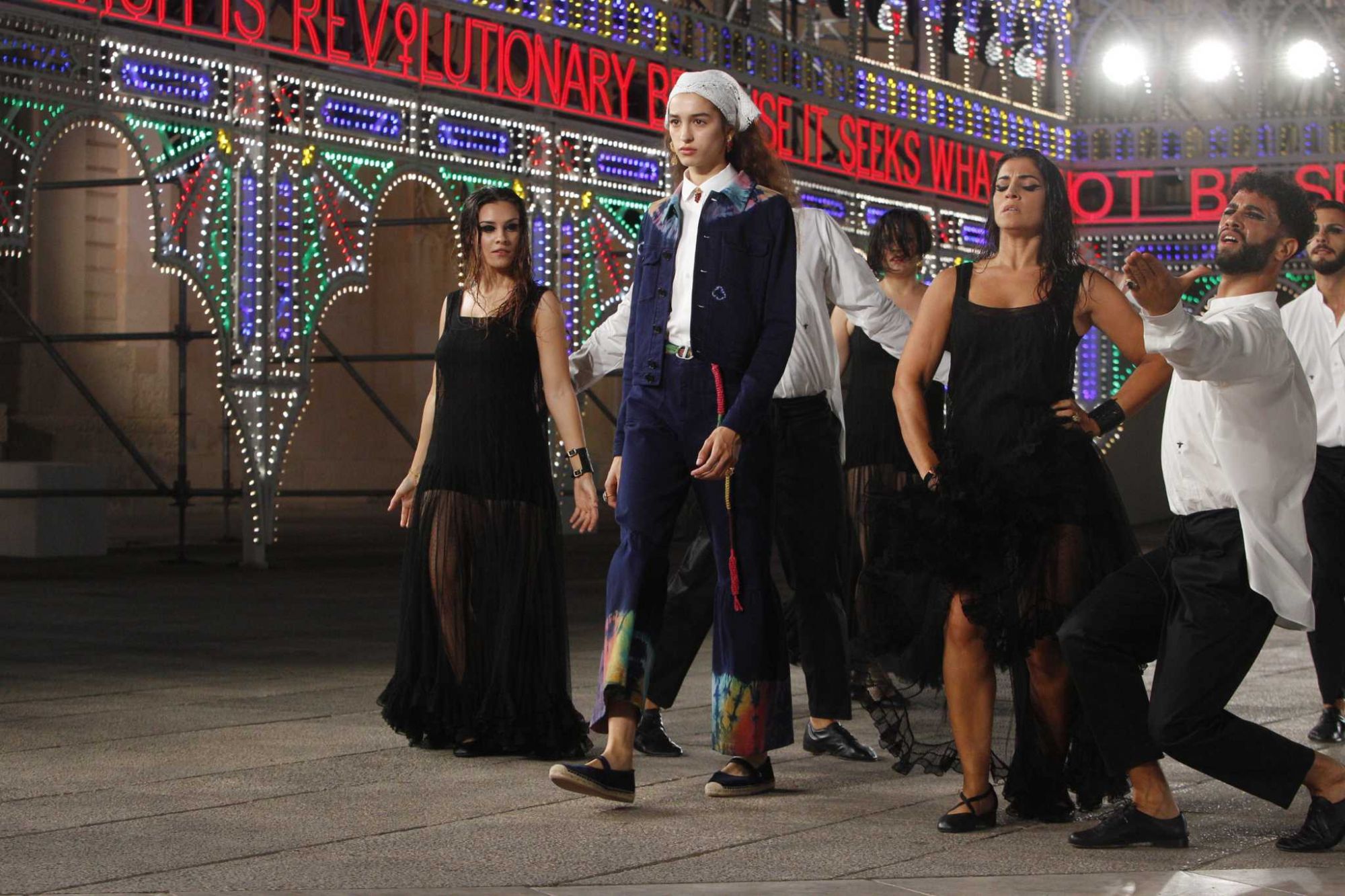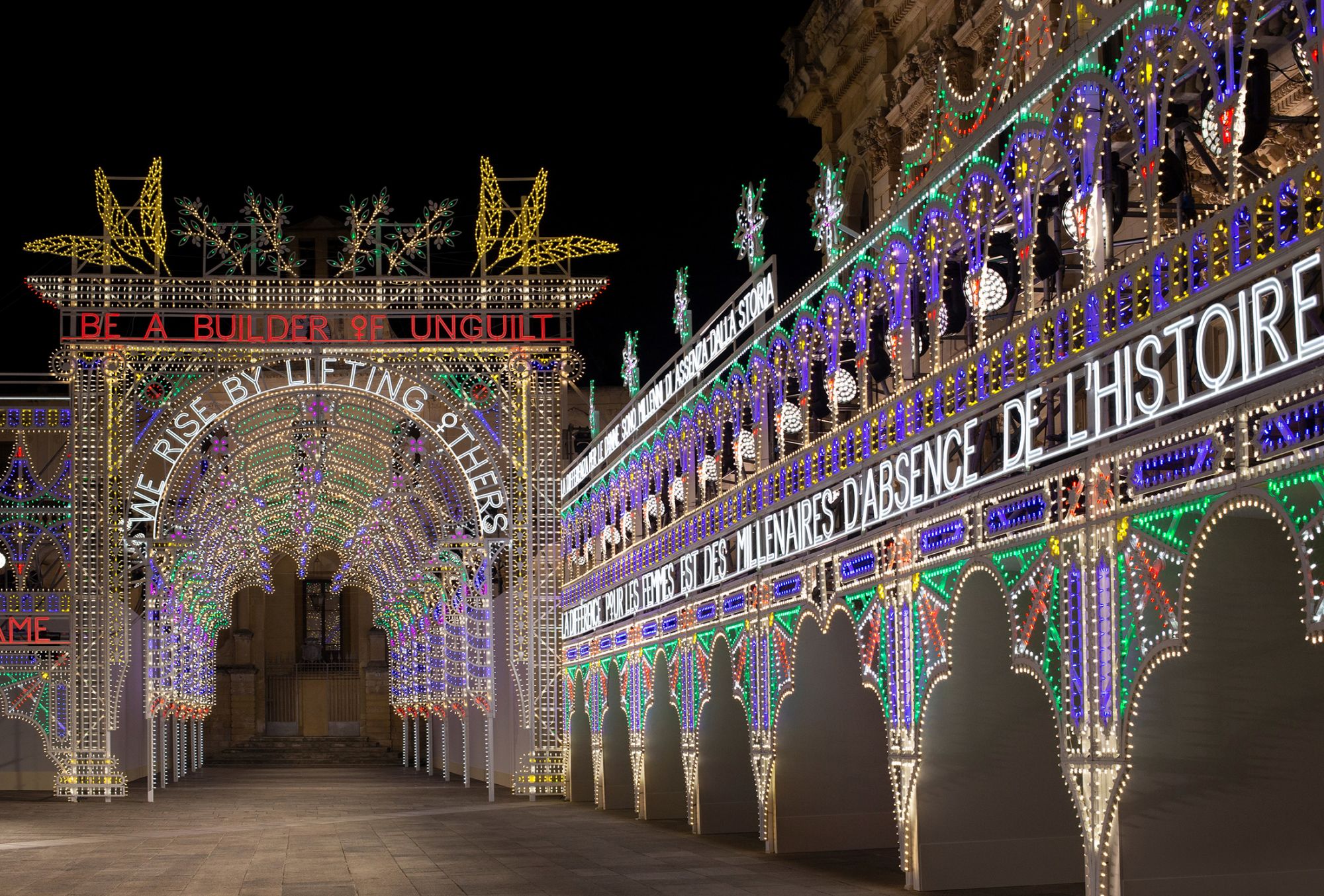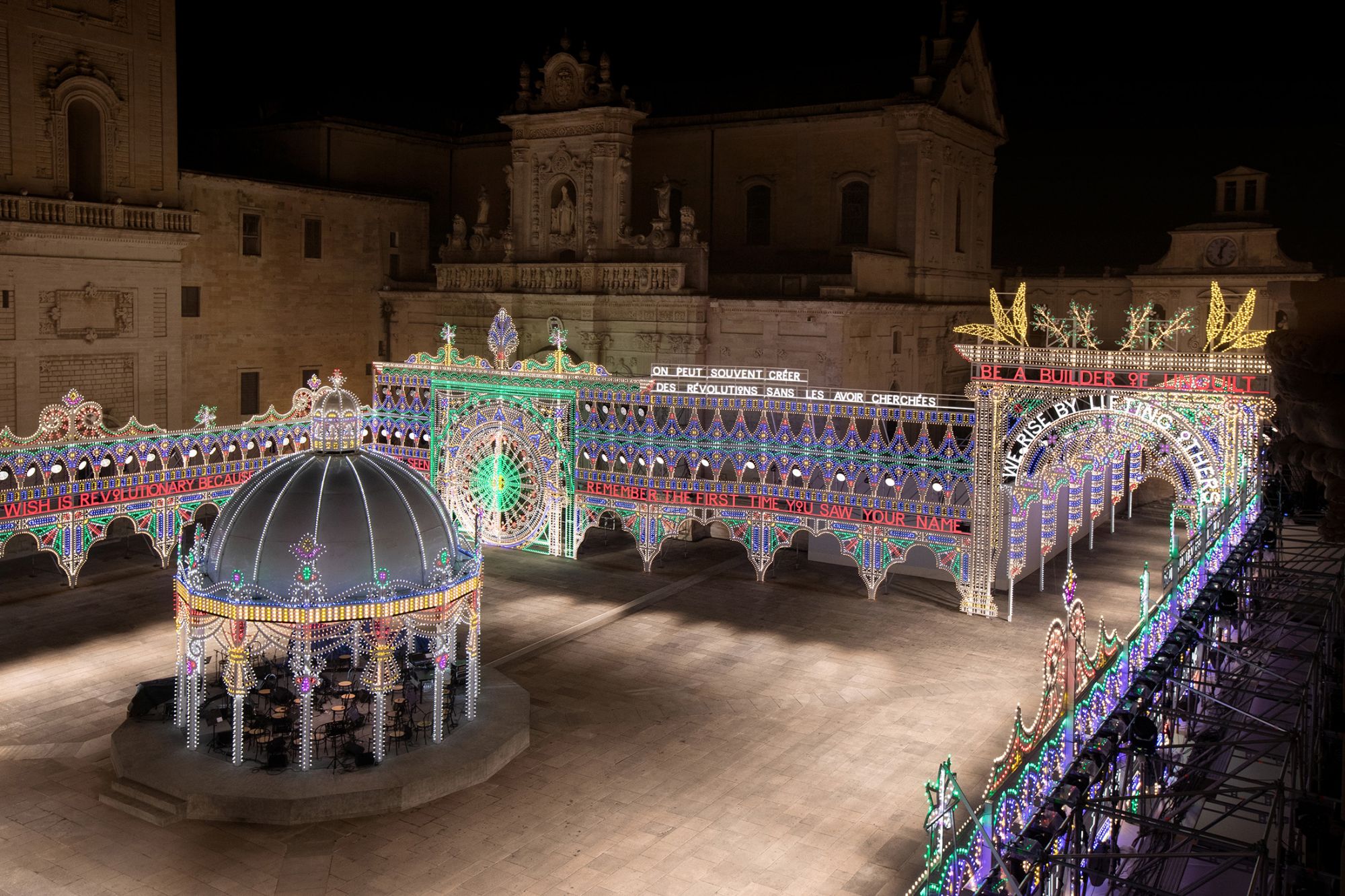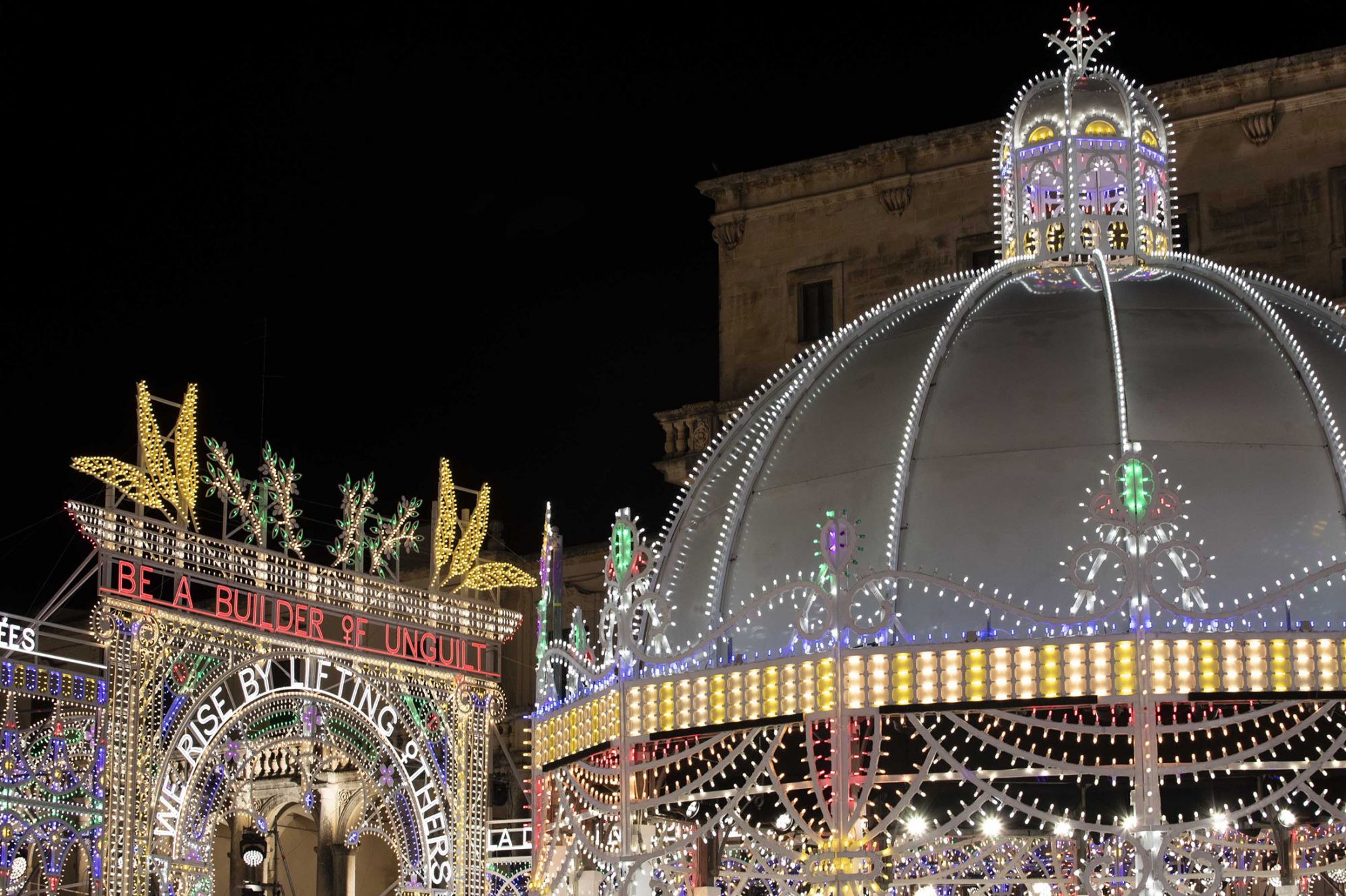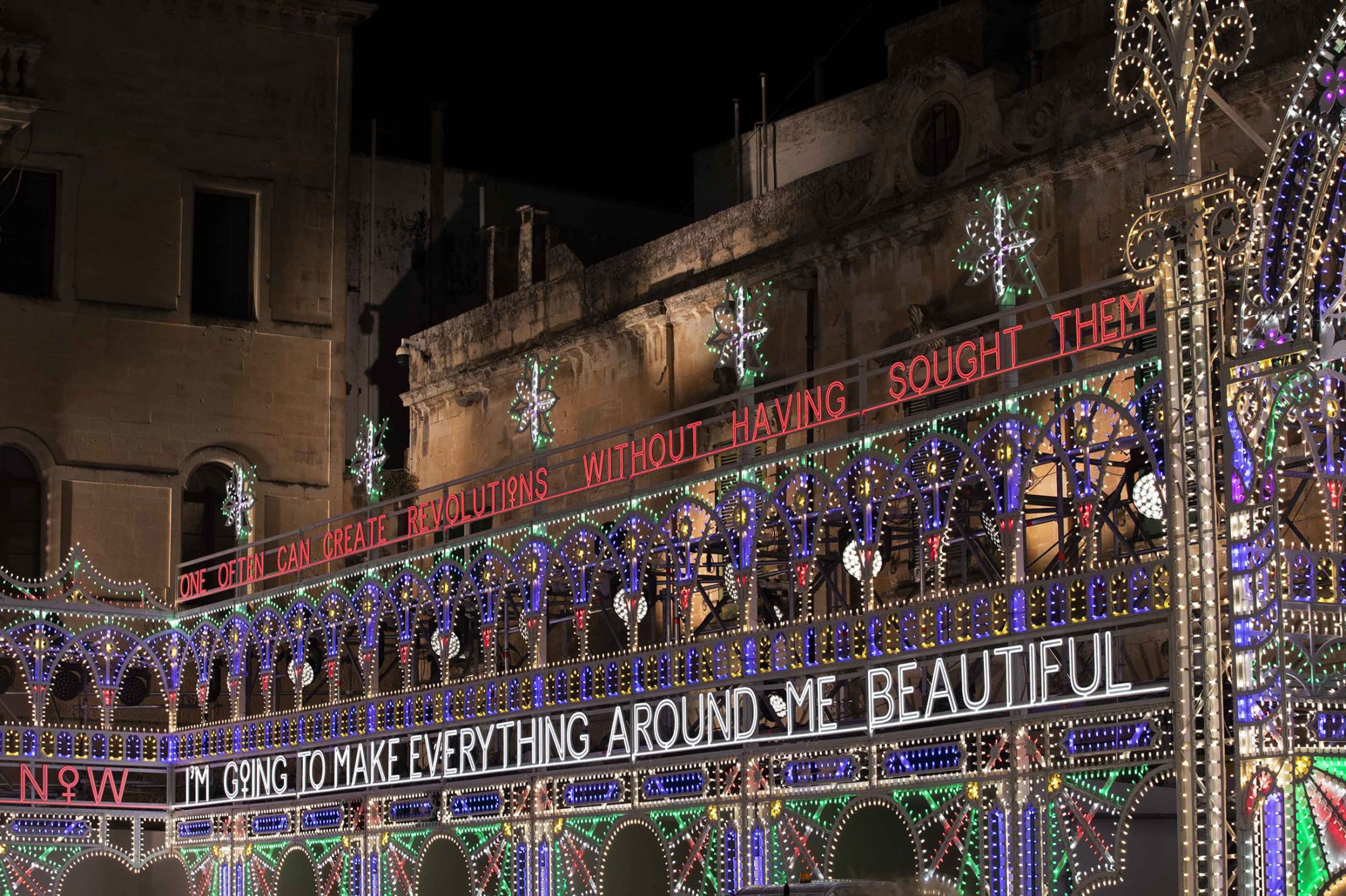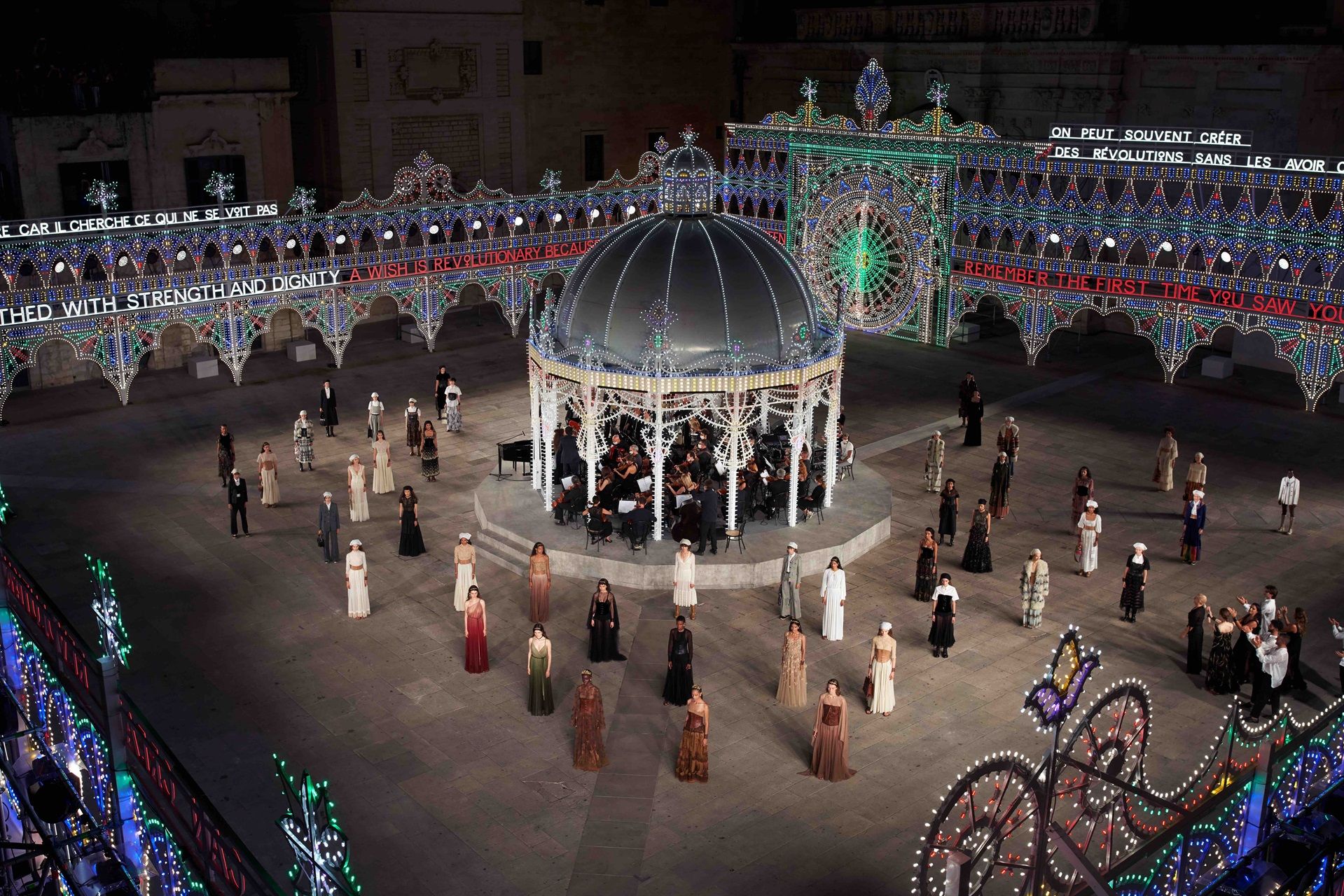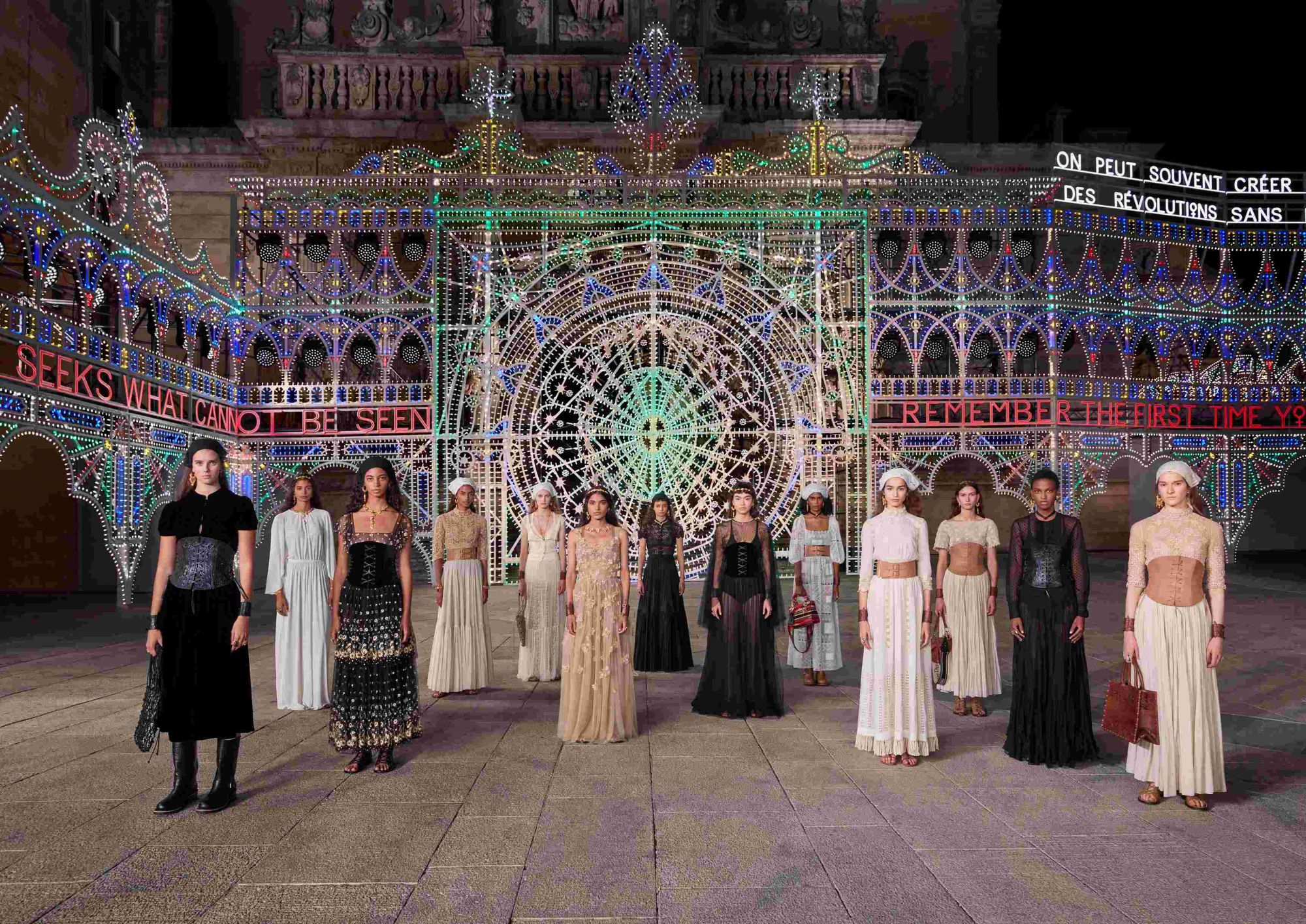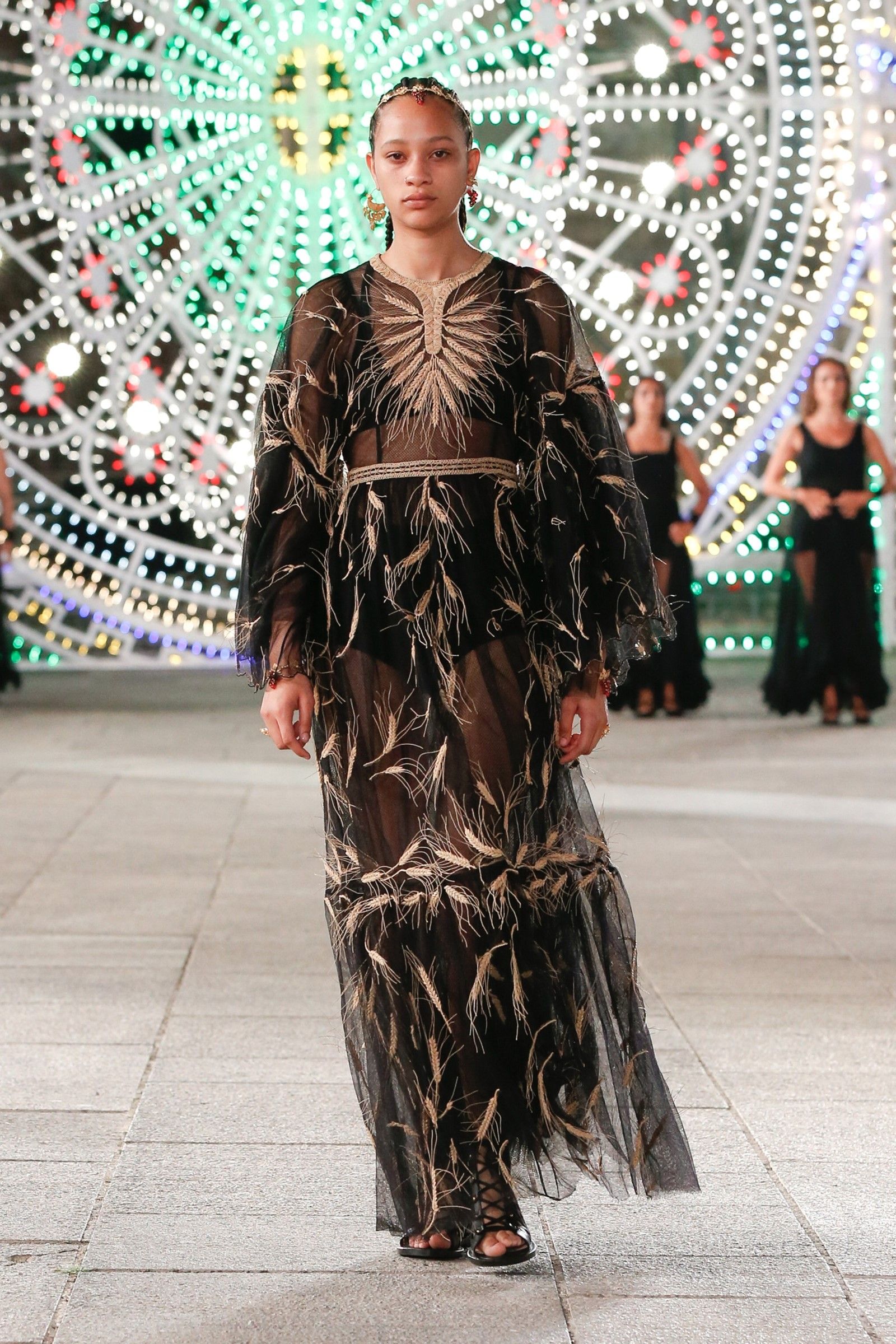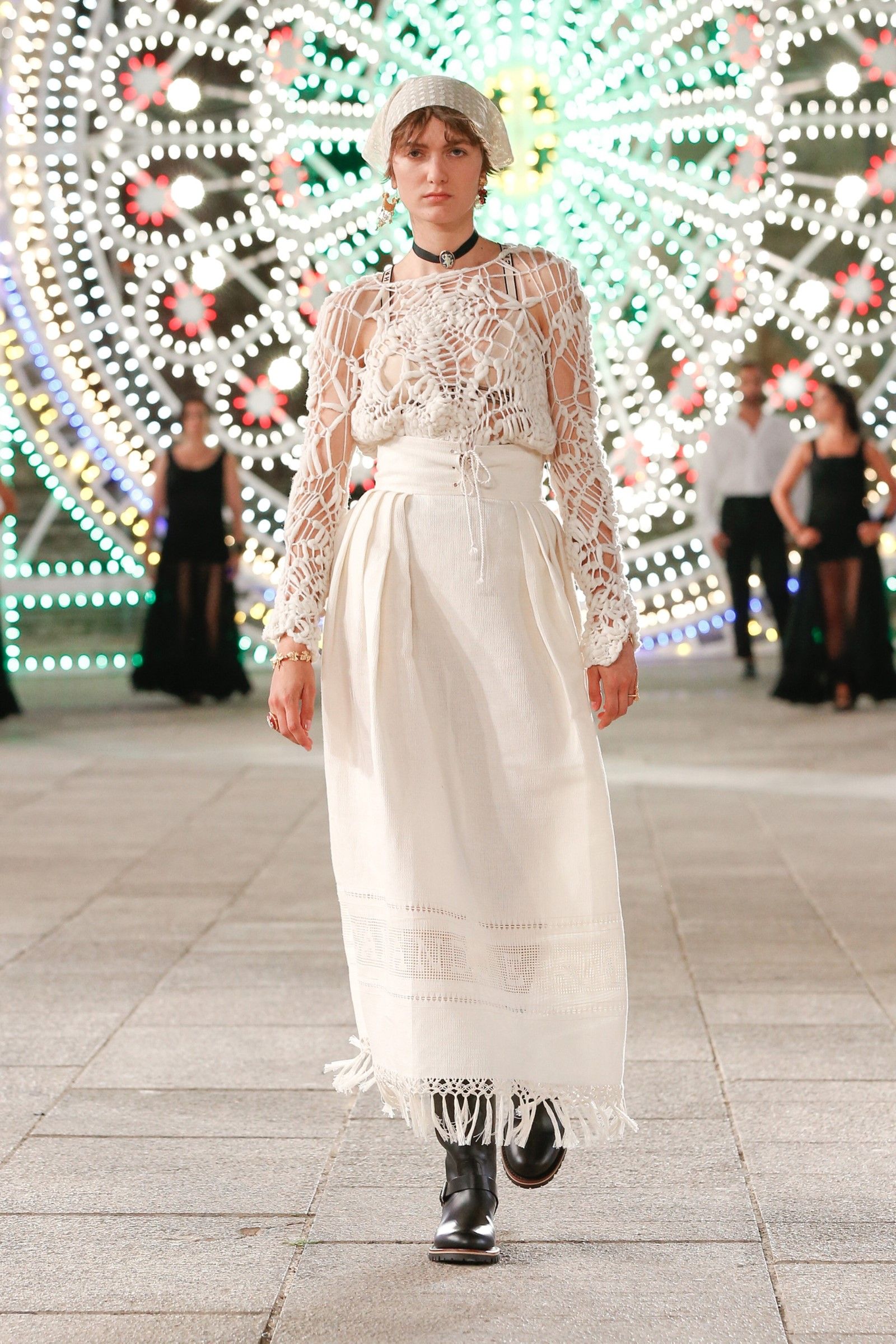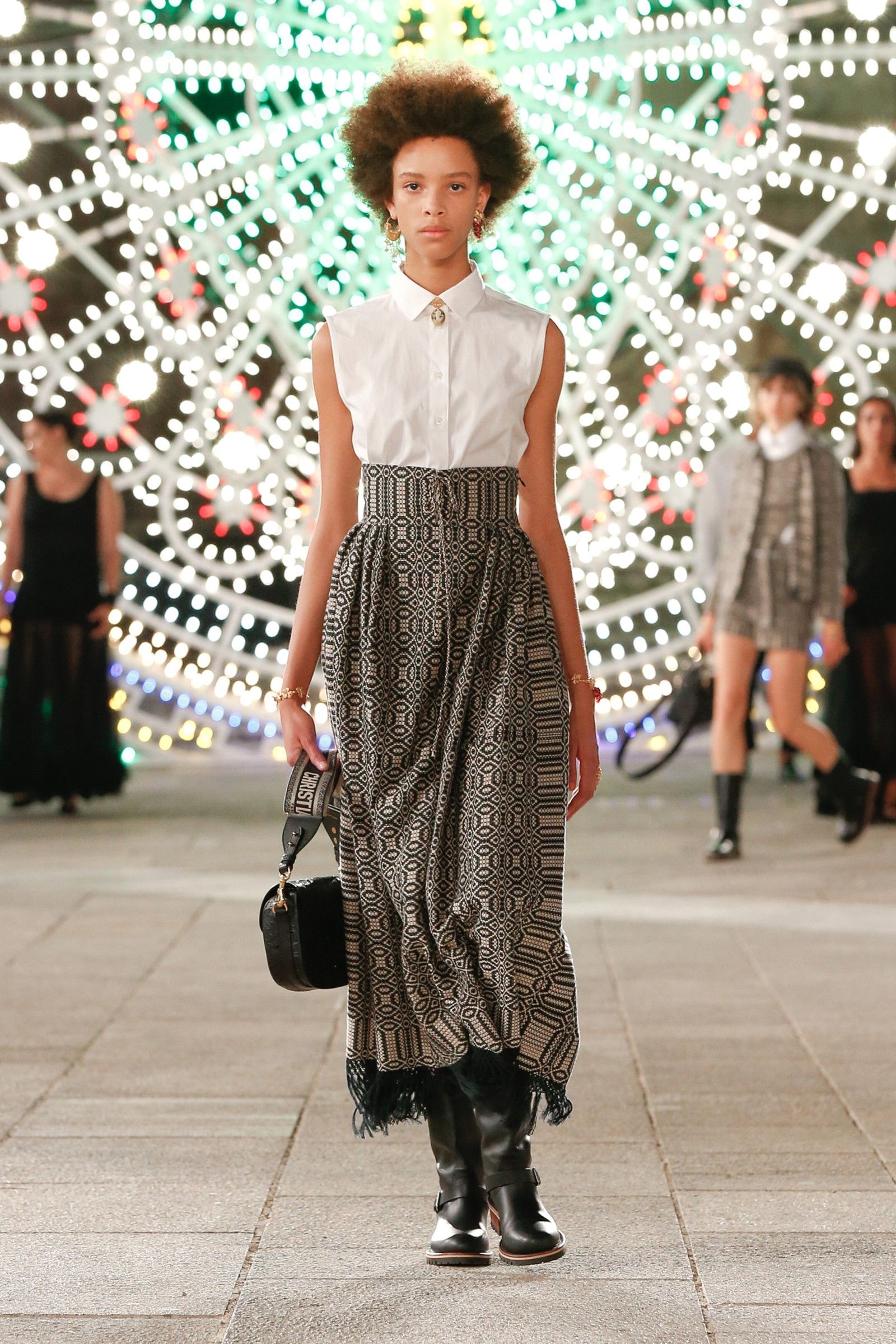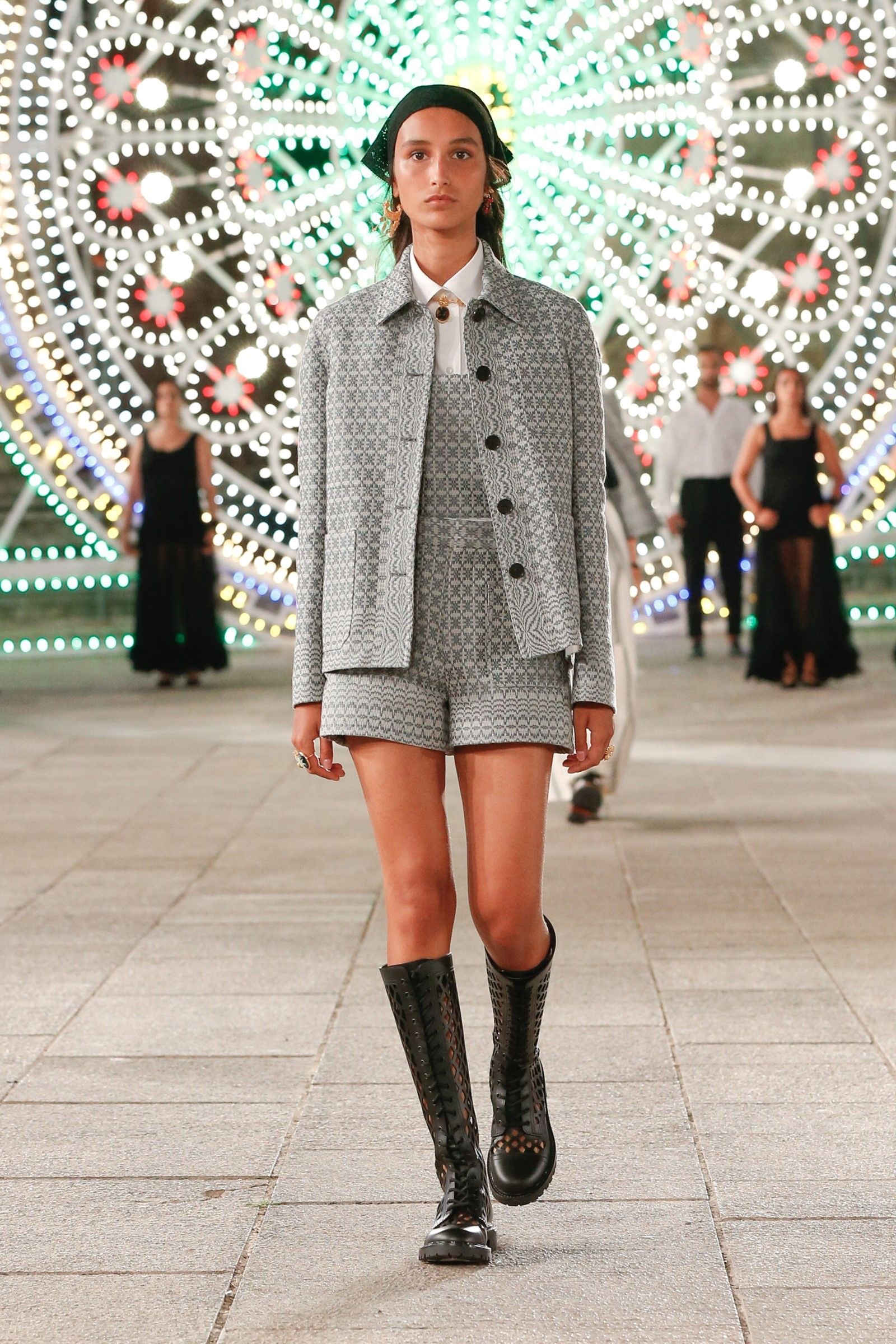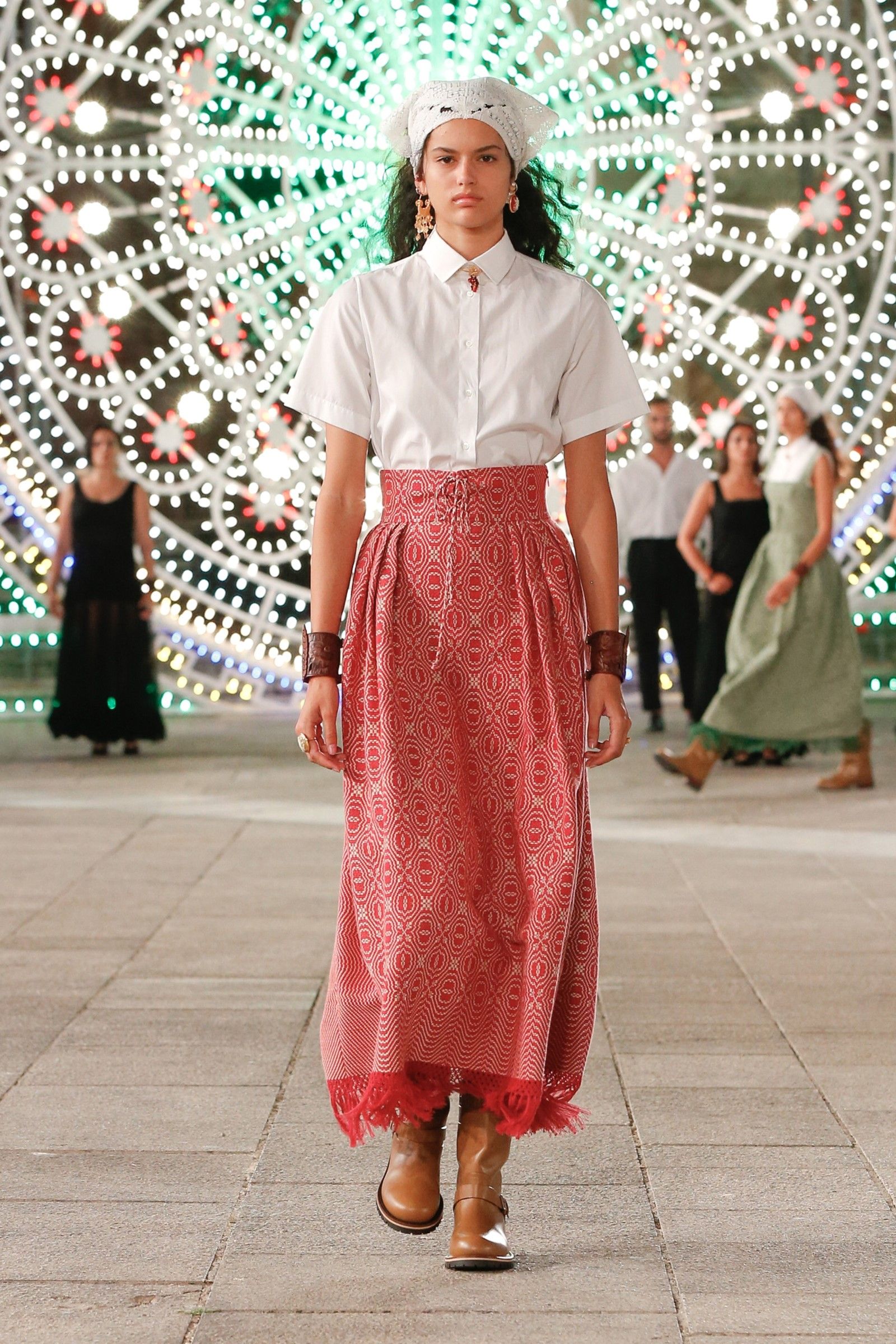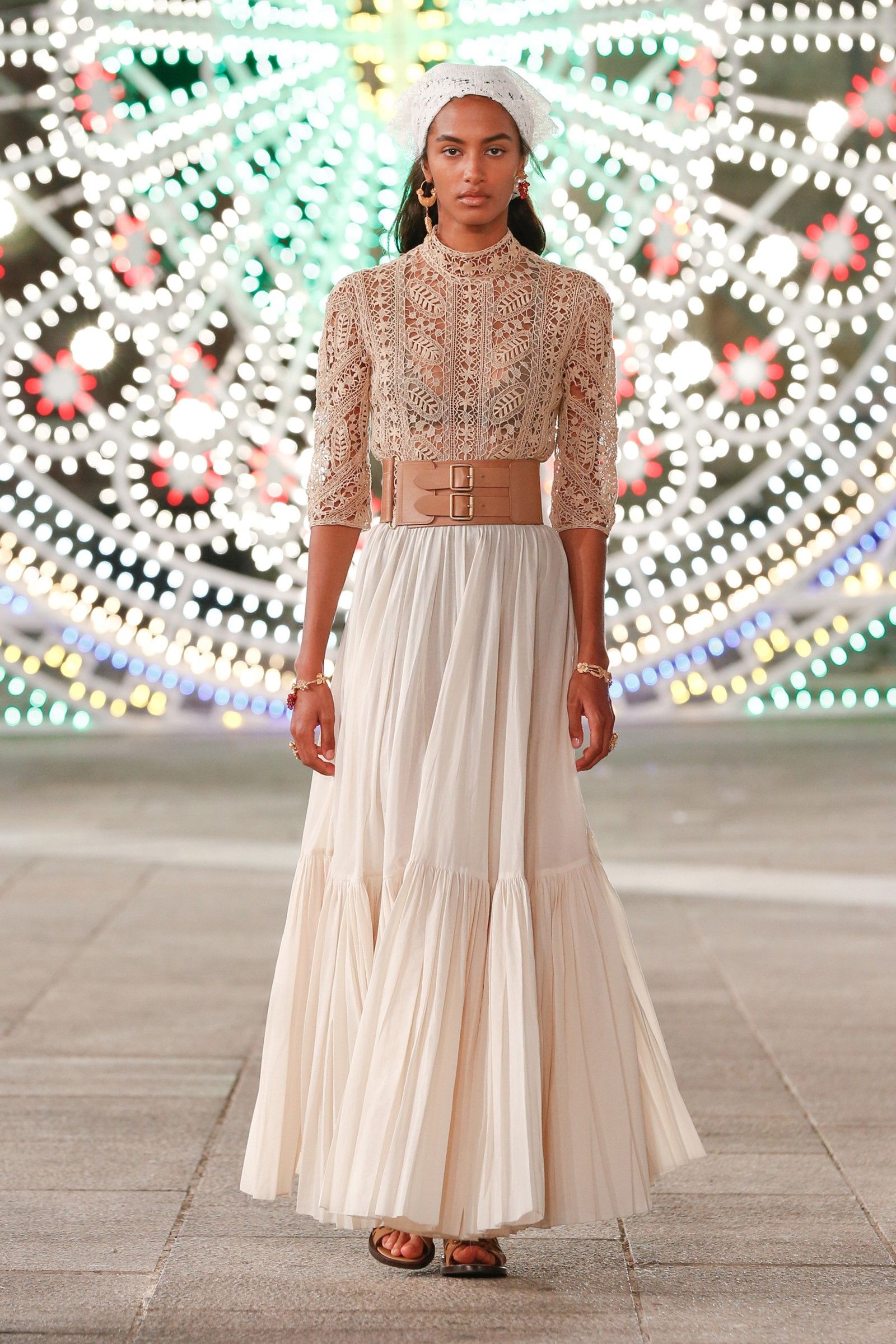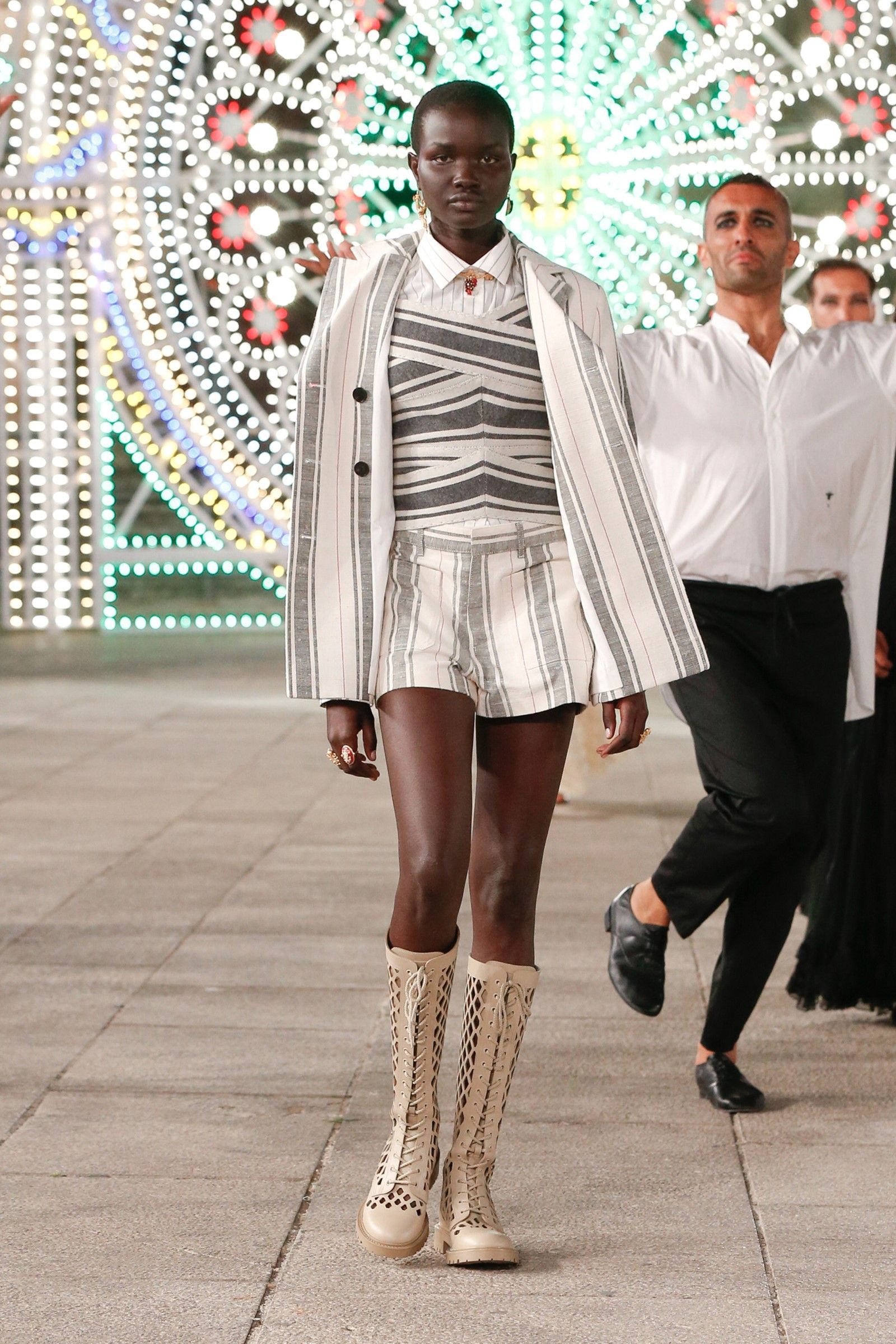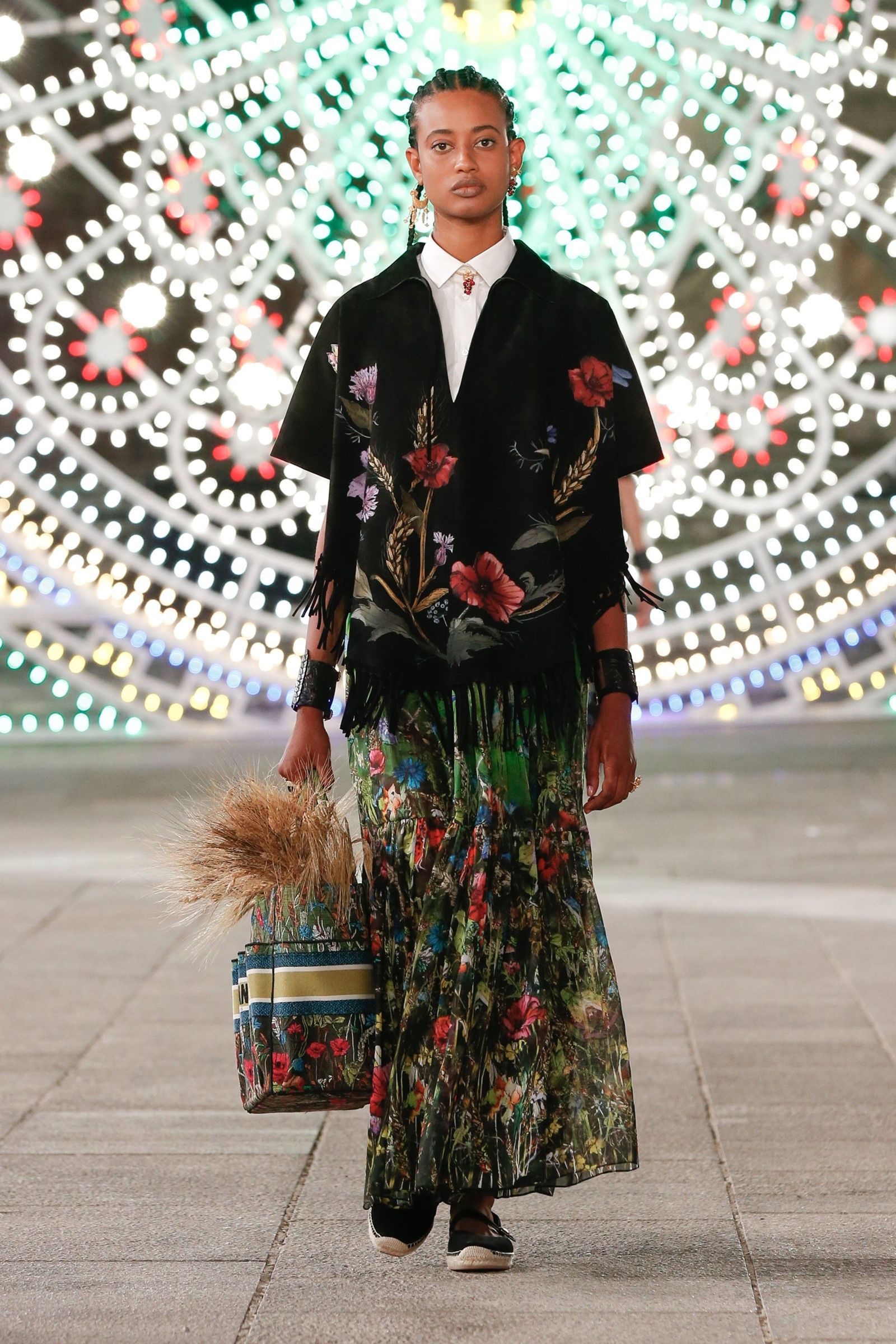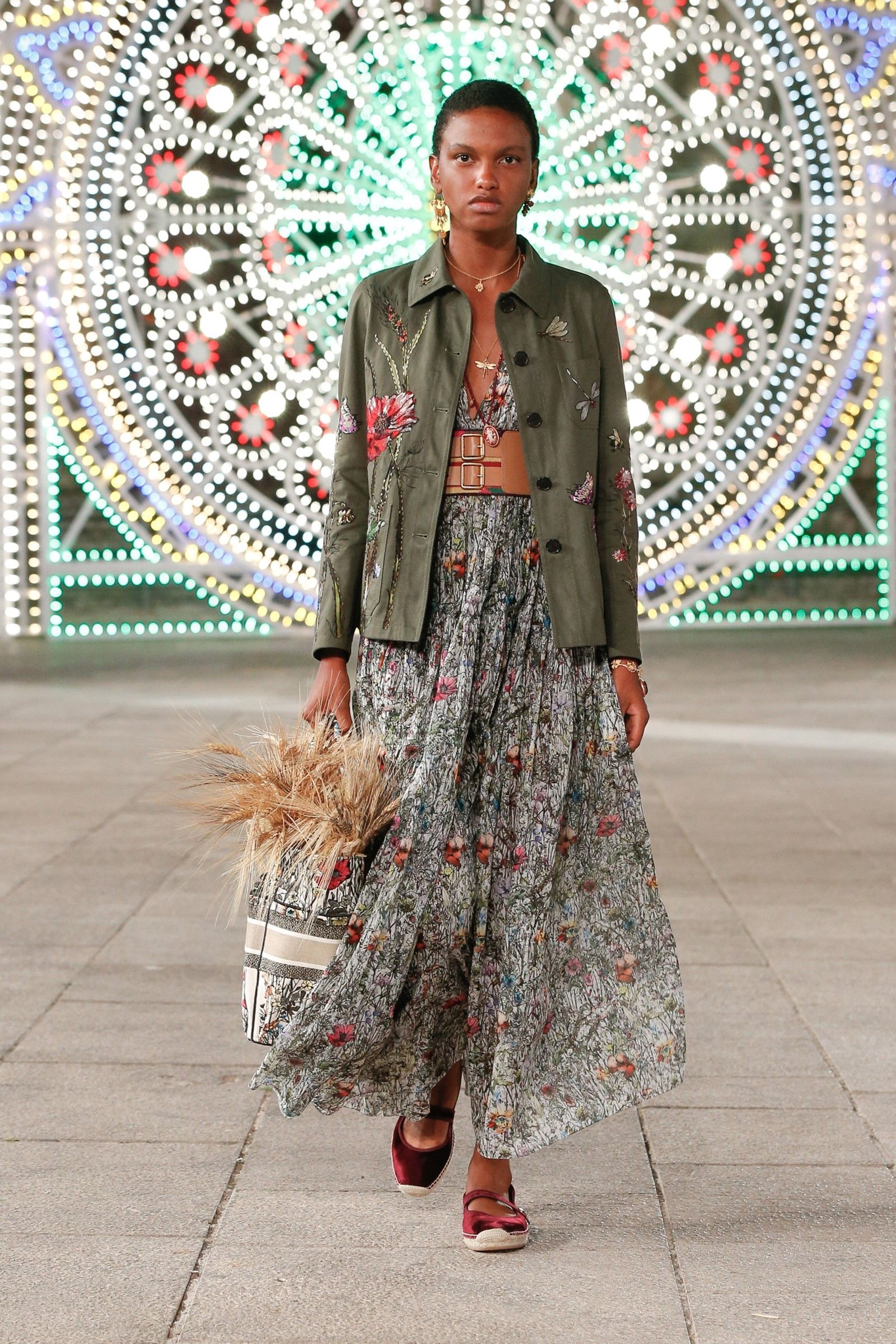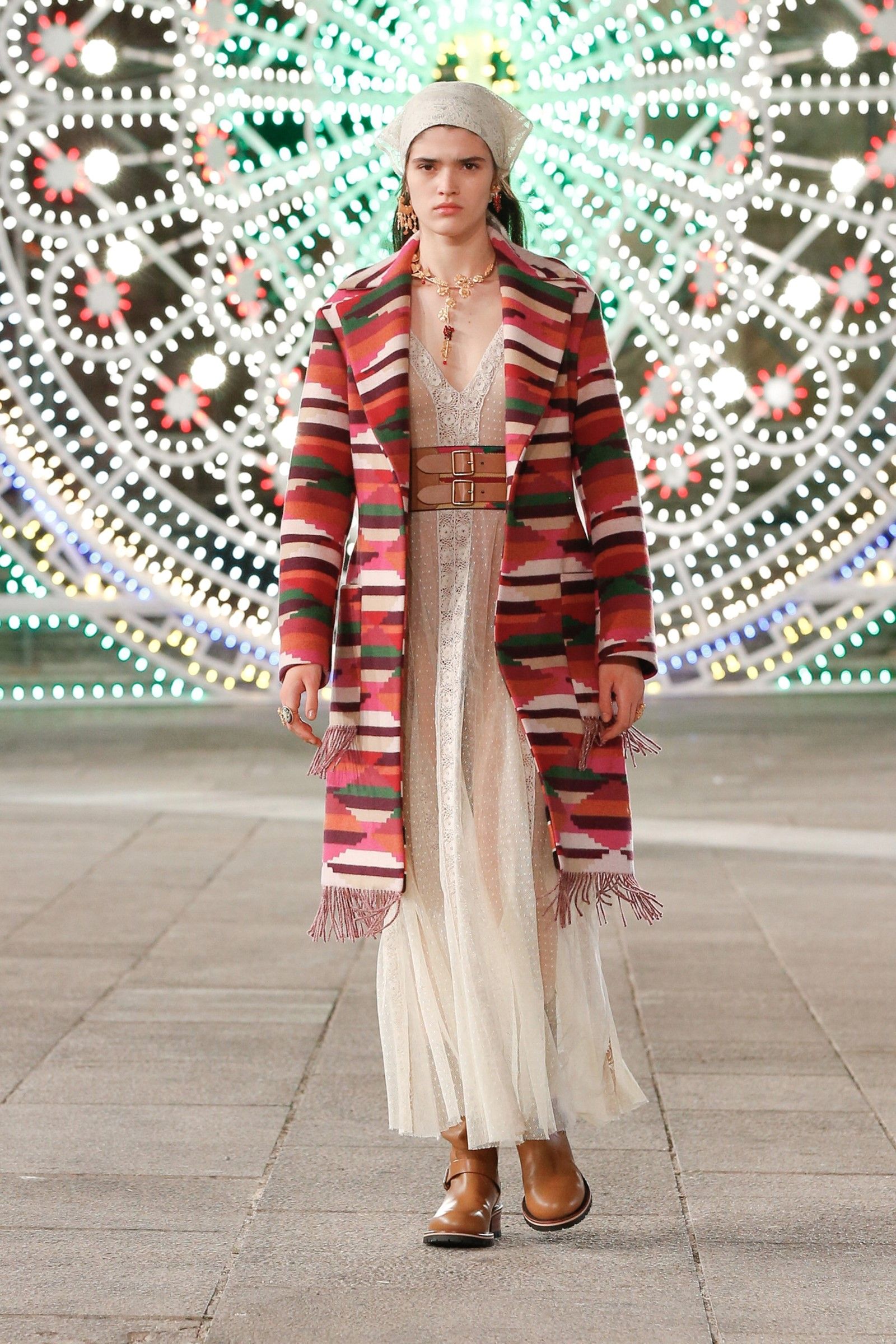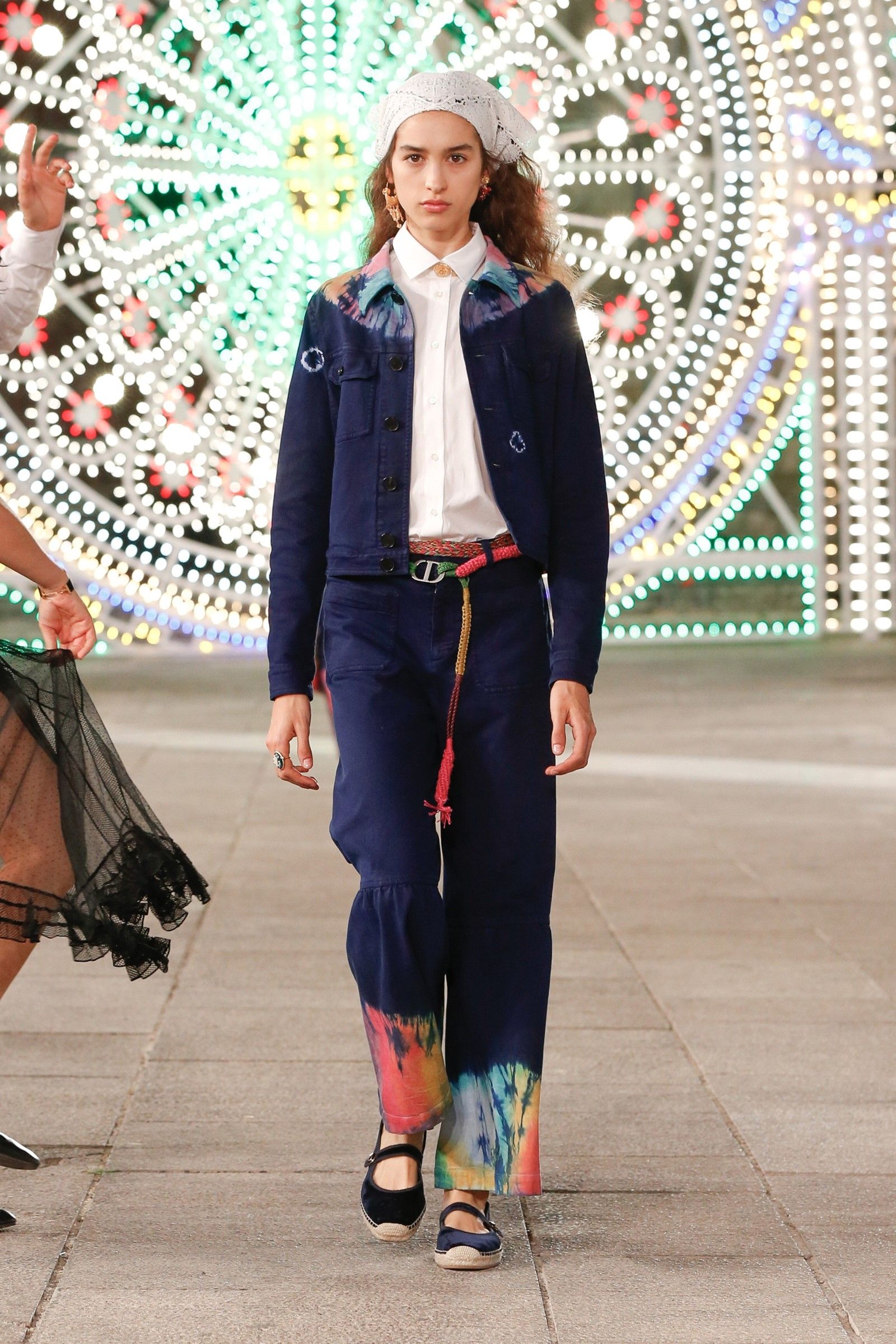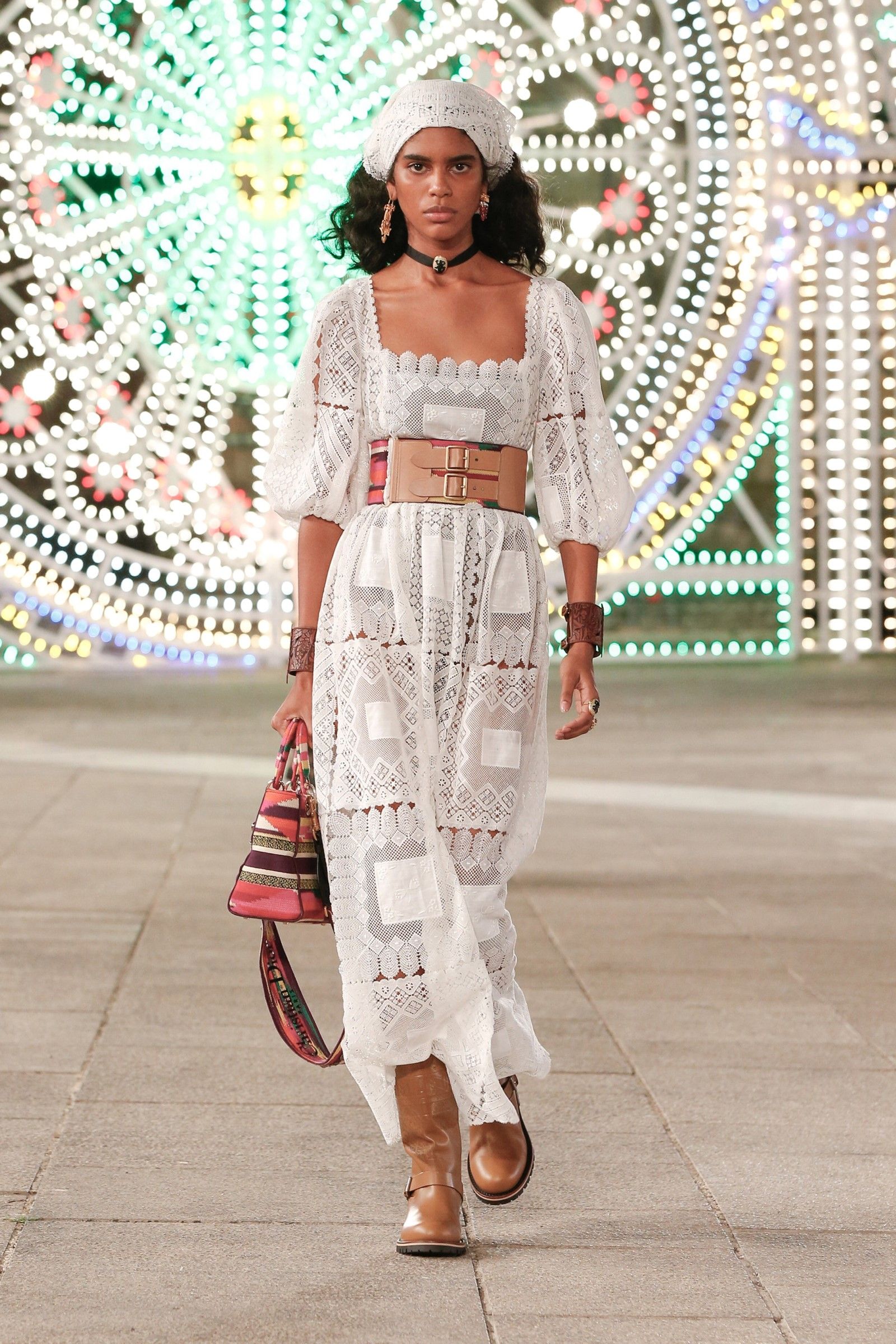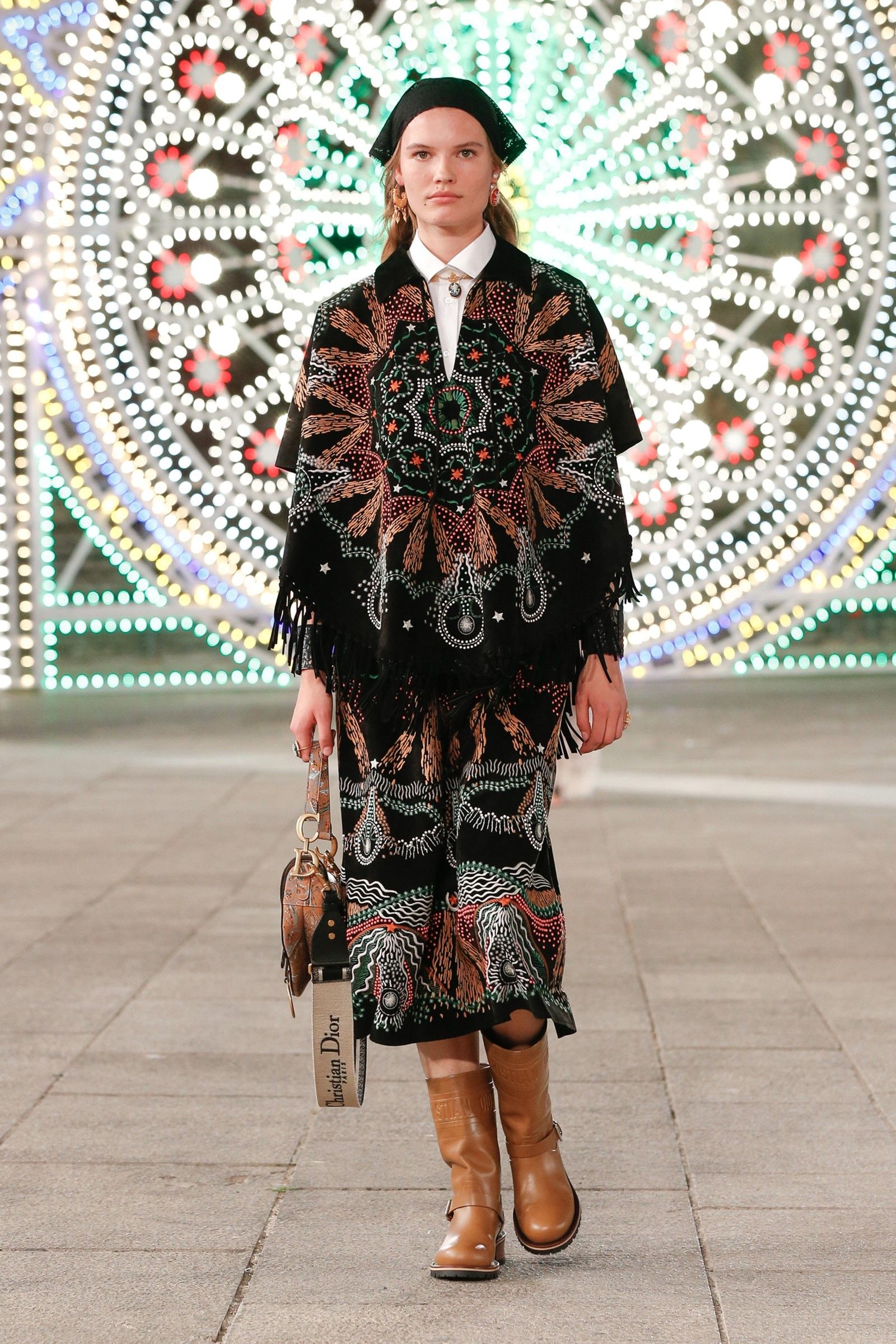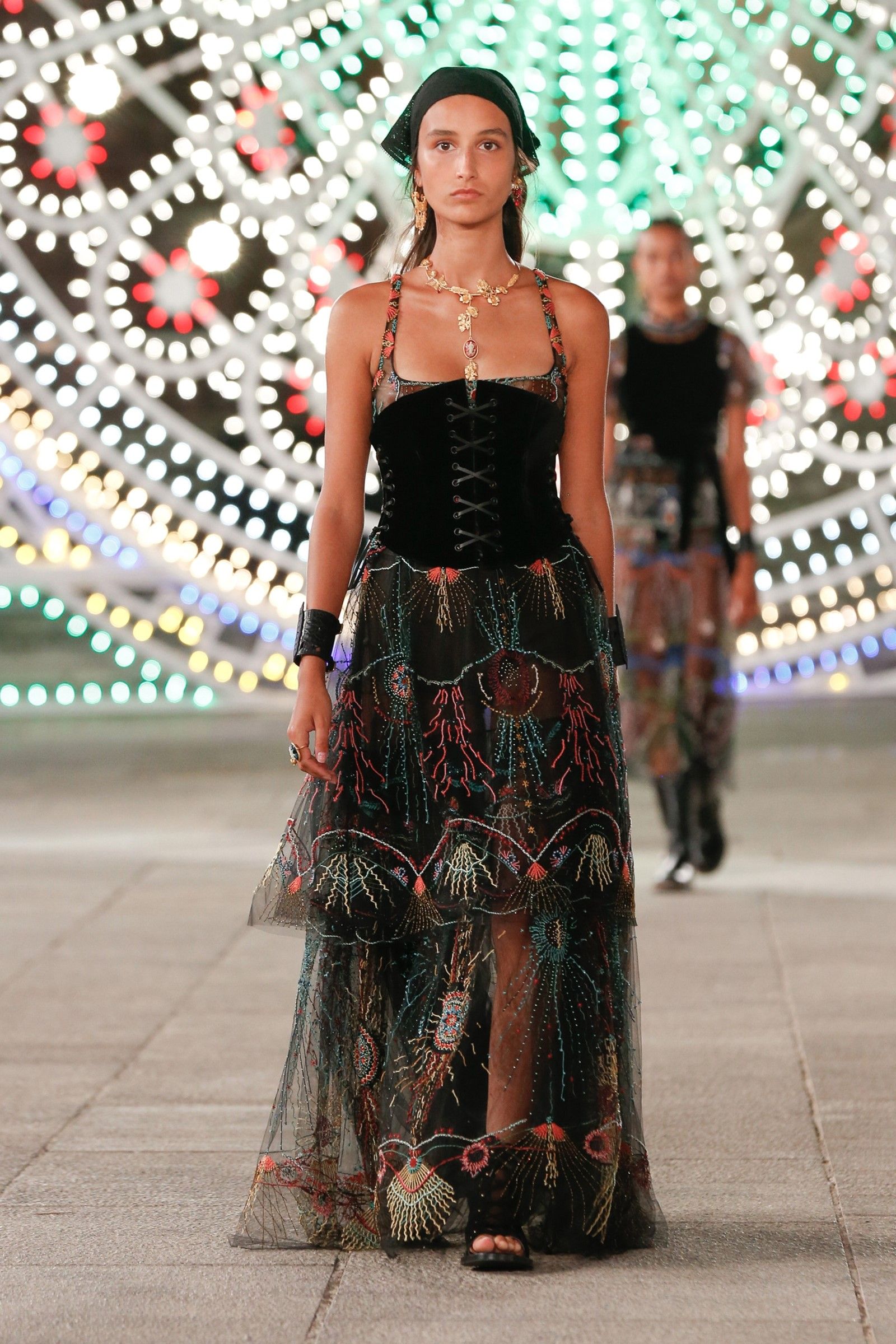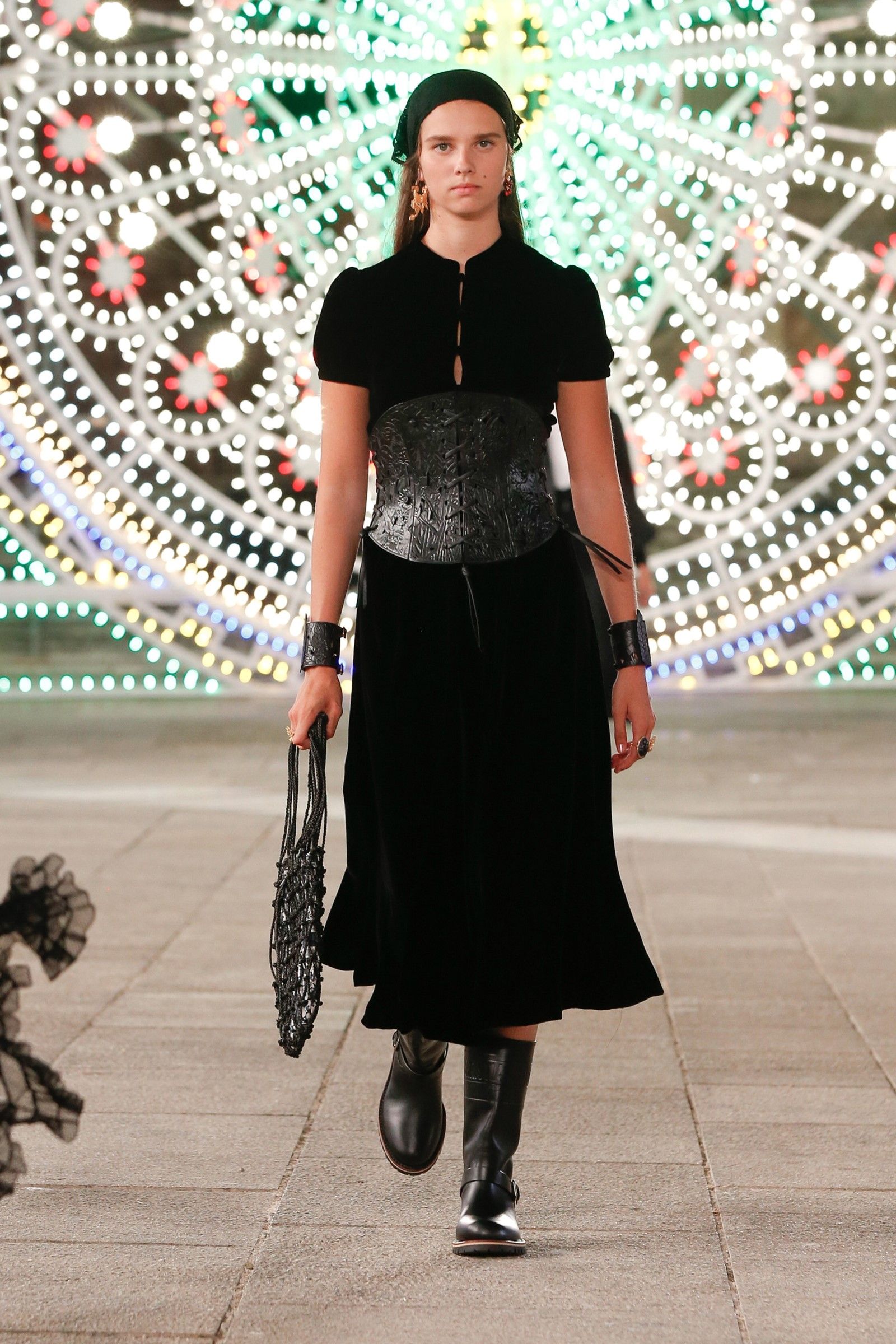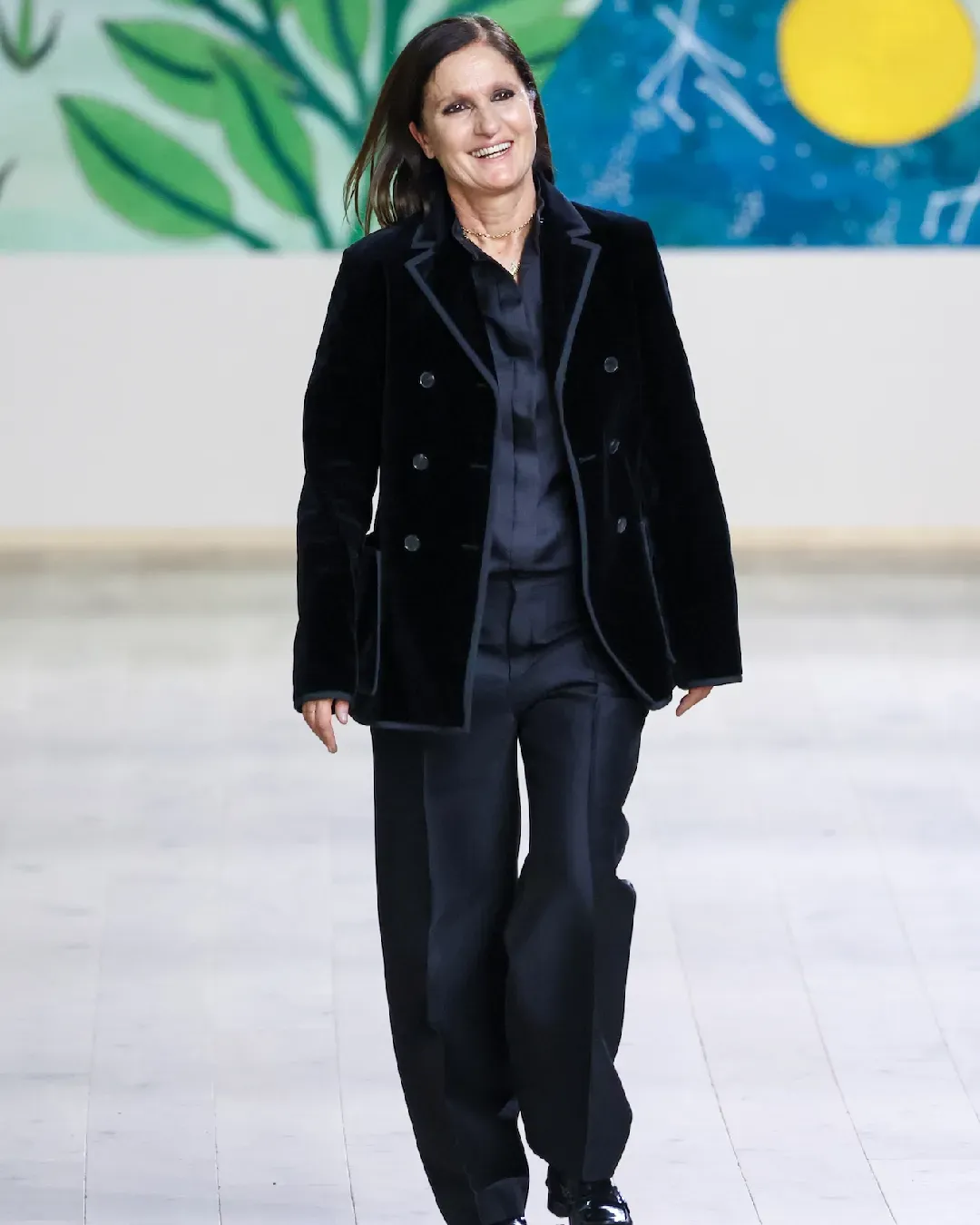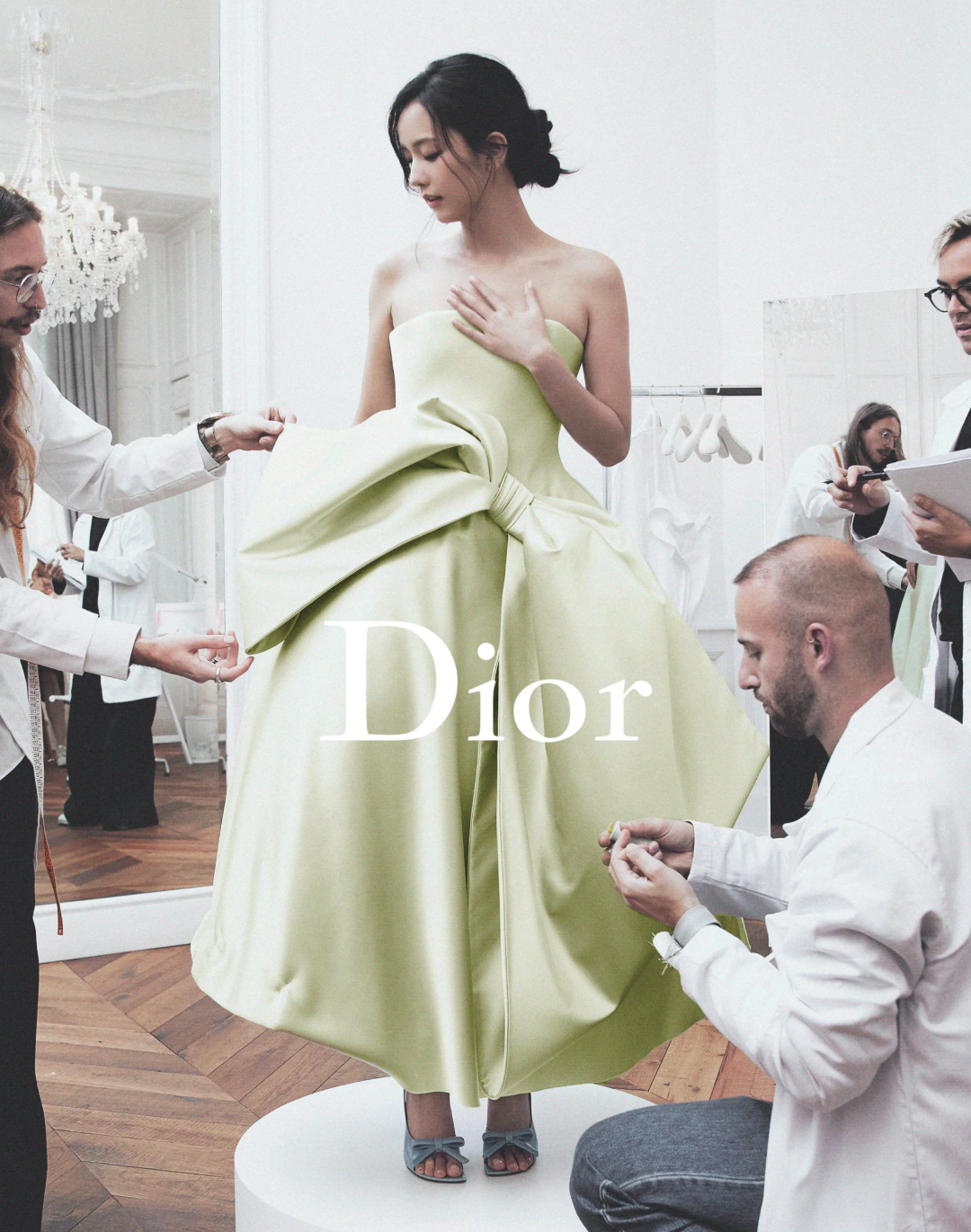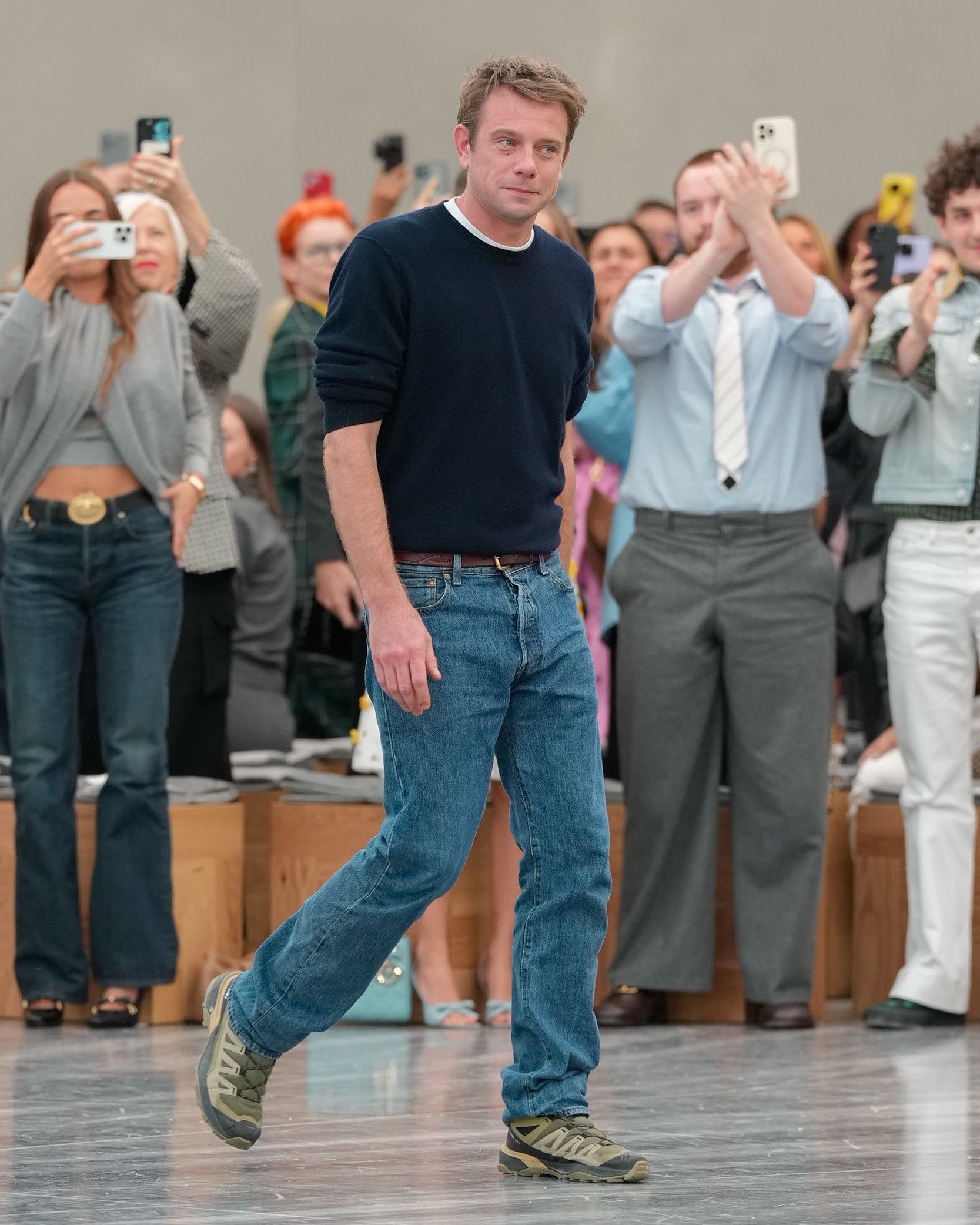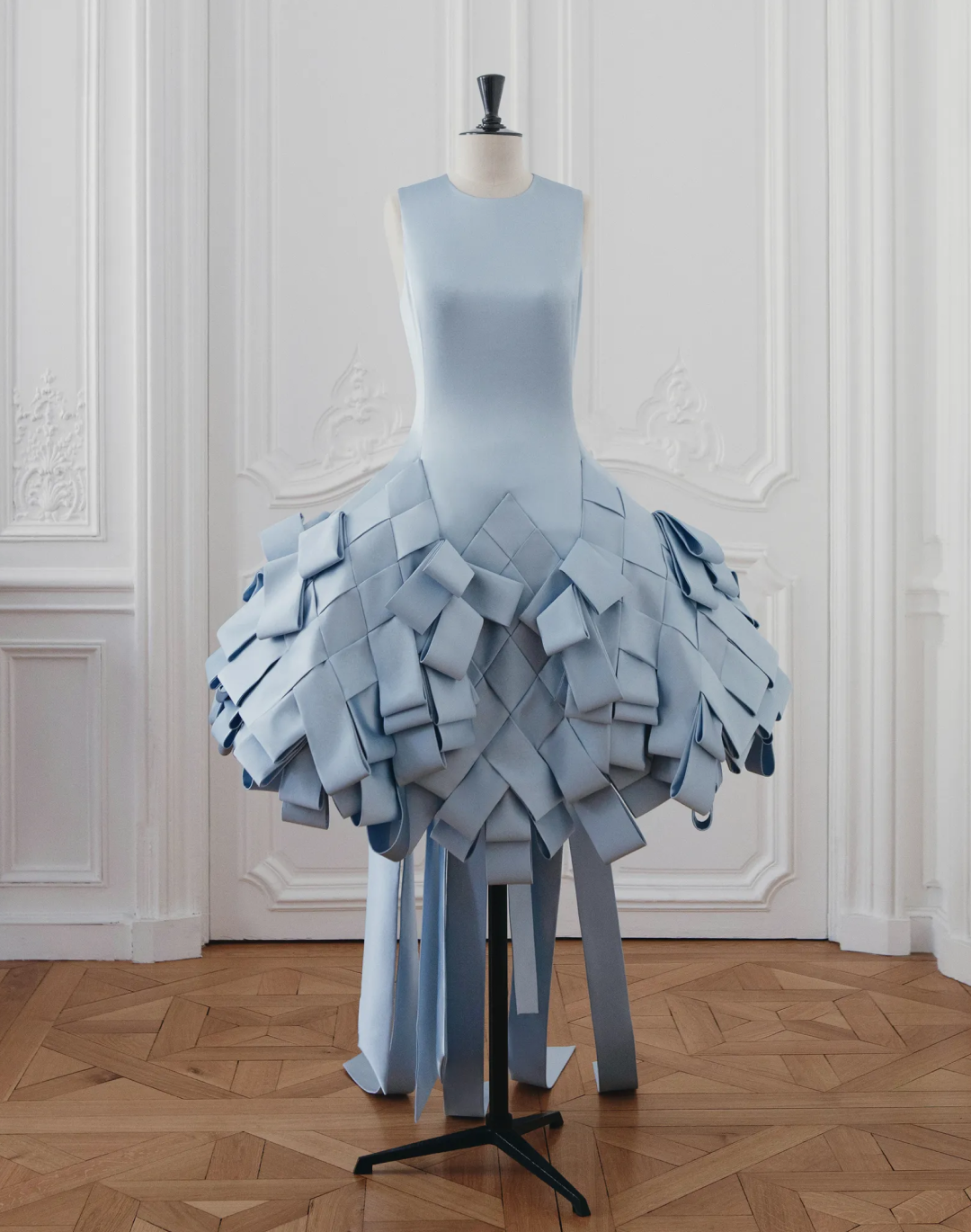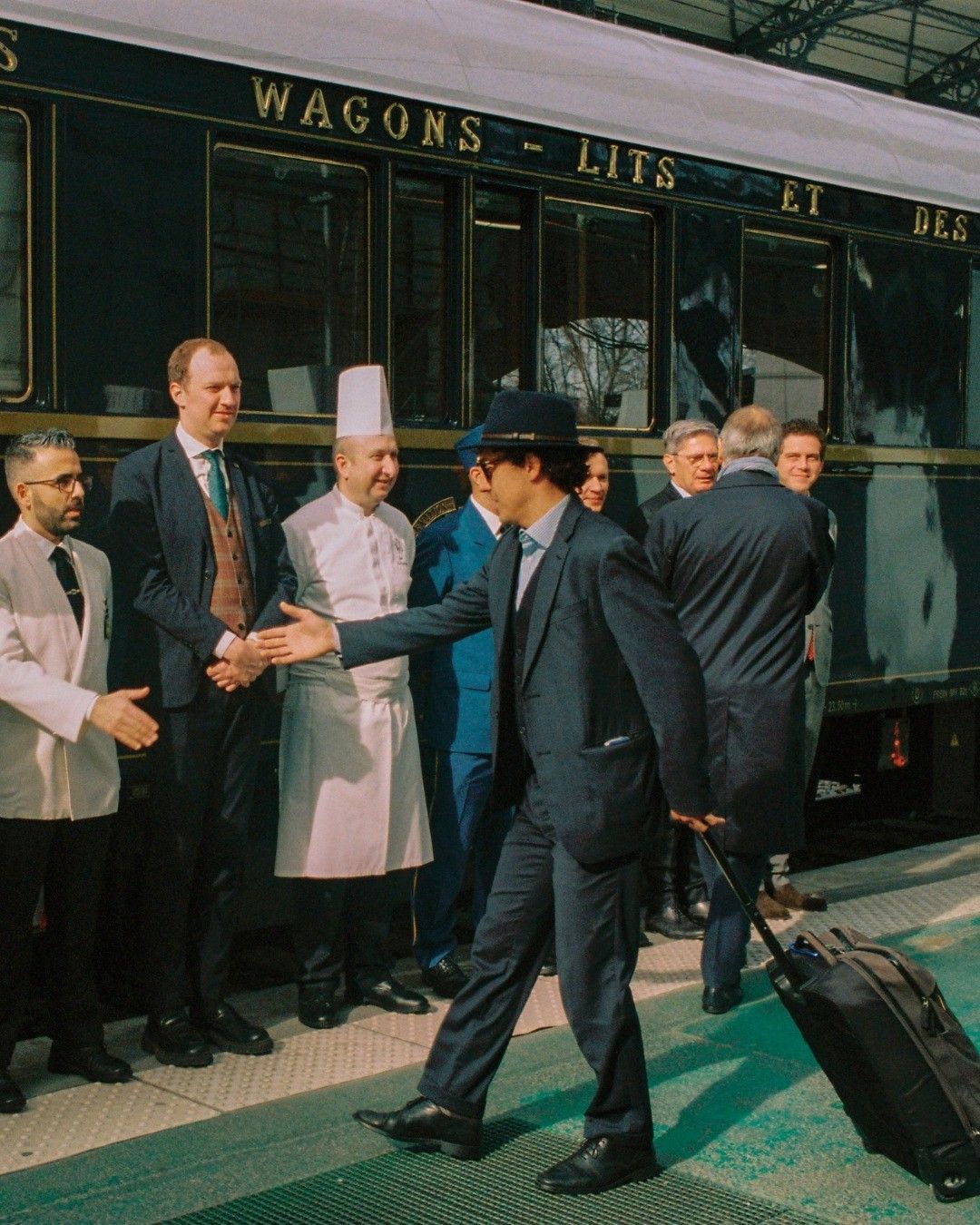
How was Dior's show in Lecce? An opulent celebration of the traditions and arts of Puglia
Last night, the Piazza del Duomo di Lecce hosted the pharaonic show for Dior's Resort 2021 collection that Maria Grazia Chiuri dedicated, in every detail, to the workers and costumes of Salento. Ninety looks and a singing and choreographic accompaniment filled the twenty-seven minutes of the show amidst an architecture composed of the traditional Salentine artistic luminaries – among which included for the occasion the usual empowering slogans in English and French that Chiuri had already used for many of her shows. With its 2,400 square meters of extension, the set has even surpassed the set-up seen last year for the exhibition at the Victoria & Albert Museum and, along with the rich programme of both physical and digital events and projects organized by Dior this season, is aimed at reinforcing the brand's image, especially after the crisis that marked the first months of the year, and signal a restart in great pomp.
With only a hundred guests present, including Chiara Ferragni and consort, as well as Giuliano Sangiorgi from Negramaro, the audience of the show were the same citizens of Lecce, gathered around the front rows and on the balconies – turning into reality the concept of square festival conceived by Chiuri and interpreted as a key of collective participation of the entire community in the show. The sense of the community and the cult of ancient tradition were also manifested in the garments of the collection: the lace embroidered according to the technique of the tombolo that decorated one of the dresses was made by the craftsman Marilena Sparaci while the foundation Le Costantine took care of the woven garments. The experiment succeeded: the touch of the local artisans gave the clothes an unfiltered veracity that the petit mains of the Parisian atelier of the brand would perhaps have made too immaculate. The exaltation of local craftsmanship, then, confused the limits between high and low, contrasting the fluidity of the forms with the rigorous construction of the clothes typical of Dior DNA.
The show was also a celebration of Southern women, whose message this time (and perhaps for the personal element possessed by the collection) appeared much more circumstantial and less generic than the previous Fashion Shows by Chiuri, who told Vogue:
«In Paris they’re so proud about their tradition; fashion is part of their cultural heritage. But we don’t have the same attitude in Italy. Probably it’s because these traditions are made by women at home, so there’s this idea that it’s domestic work. They don’t think it’s creative work. They don’t give it the same value. They don’t celebrate it. With this show I hope to give a different point of view».











































